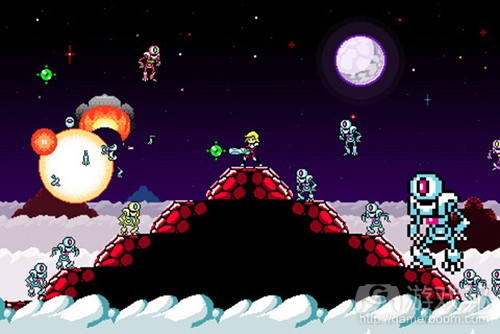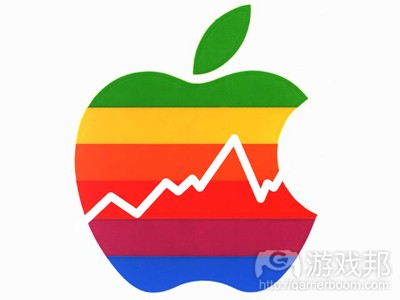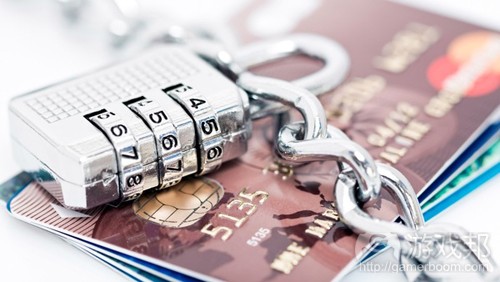每日观察:关注苹果新iPad设备材料成本(3.19)
1)IHS iSuppli最新分析报告指出,苹果新iPad材料清单显示,该设备材料成本为364.35美元。如果加上10.75美元的制造成本,该设备总计生产成本为375.10美元。
16GB/4G LTE的 iPad材料成本为347.55美元,64 GB的iPad材料成本为397.95美元,而支持32 GB/4G LTE的iPad材料成本为364.35美元,相当于其729美元零售价的50%。最低端的16 GB/无LTE的iPad材料成本为316美元,由此可见4G LTE成本占据了相当比例。而最高端的64 GB/LTE的 iPad成本为408.7美元。
报告指出,这些费用仅包括硬件和设备制造成本,不包含软件、授权、税收等其他费用。
尽管新iPad零售价与iPad 2相同,但其生产成本却远高于后者。例如32 GB、支持LTE技术的新iPad成本就高于32GB、支持3G无线网络的iPad 2(后者成本为335美元)。
三星是新iPad的最大硬件供应商,为该设备提供了显示器、A5X应用处理器。显示器是该设备最昂贵的部件,成本达87美元,而应用处理器成本则是23美元。也就是说,三星硬件在32GB/LTE的 iPad的成本中占比30.2%。
2)据gamasutra报道,针对苹果发售新iPad这一事件,不少iOS游戏开发商表达了自己对该设备新功能的想法和期望。
GREE高级产品经理Akihito Ninomiya(游戏邦注:代表作包括社交游戏《Zombie Jombie》)表示,该设备的新功能将带来一系列新挑战,不过这种挑战值得一试。
但Action Button创始人Tim Rogers(《ZiGGURAT》开发者)则认为屏幕像素或新功能并非关键要素,有些游戏无论在哪种设备(或者像素)上都会发挥出色表现,《ZiGGURAT》这种复古式游戏便是其中典型。
3)据PCR报道,苹果正式发售新iPad当天,苹果公司股票价格上涨至600美元。2011年圣诞节苹果股价上升至400美元,该季度iPad和iPad 2销量约1500万部。有分析师预测,苹果股价有可能超过700美元。
4)EA PopCap全球发行副总裁Dennis Ryan在最近采访中表示,他认为Facebook对非Facebook游戏开发商也提供了许多帮助,该社交网站所提供的虚拟钱包、身份和社交图谱等功能已建立了社交玩法的重要基础。
5)据venturebeat报道,Kongregate创始人Jim Greer最近透露,Kongregate在GameStop旗下运营情况良好,在过去一年中的虚拟商品销售额增长3倍,采用虚拟商品的游戏数量双倍增长,目前虚拟商品销售额占Kongregate总营收的80%左右。
6)据《纽约时报》报道,去年底中文iOS游戏黑卡现象目前也蔓延到了西方工作室推出的英文版游戏,有名美国用户的信用卡在Storm 8游戏《iMobsters》中“被消费”437.71美元,而他声称自己从来没下载过该游戏。
Spry Fox首席执行官David Edery表示,只要某个平台获得成功,就难免会产生此类乱象。但苹果却至今未正面回应此事,仅表示公司正致力于加强安全防范,并建议信用卡被盗刷的用户及时更改自己的iTunes密码并联系自己的信用卡所属银行。(本文为游戏邦/gamerboom.com编译,拒绝任何不保留版权的转载,如需转载请联系:游戏邦)
1)iPad teardown reveals $375.10 total cost; Samsung wins big
Dean Takahashi
The new iPad costs about $364.35 for its bill of materials, according to a teardown analysis by IHS iSuppli.
The tablet also costs $10.75 to manufacture, raising the total production cost to $375.10. That means that Apple makes a handy profit on every machine that it sells for $499 or more, in keeping with the company’s policy of pricing its hardware to make profits. The cost likely gives Apple considerable advantages over rivals trying to enter the business. The teardowns also reveal who the winners and the losers are among chip and component makers.
The bill of materials for the 16-gigabyte 4G LTE version is $347.55, while the 64-gigabyte version is $397.95. The $364.35 bill of materials cost for the 32-gigabyte 4g LTE version is about 50 percent of the $729 retail price. The lowest-end version of the new iPad with 16 gigabytes and no LTE costs $316, which means that the 4G LTE components carry a pretty hefty cost.
The highest-end model with 64 gigabytes of memory and LTE costs $408.70.
IHS iSuppli notes that the estimates account for hardware and manufacturing costs only and do not include additional expenses such as software, licensing, royalties or other expenditures.
The new iPad is more expensive to produce than the iPad 2 at the time of its launch, even though the retail prices are the same. The 32-gigabyte LTE model costs 9 percent more than an iPad 2 with 32 gigabytes and 3G wireless ($335). Higher costs include the addition of the high-resolution Retina display, 4G LTE wireless, and a larger-capacity battery.
The new iPad is more expensive to produce than the iPad 2 at the time of product launch, even though the retail price points are the same. The 32GB LTE model’s BOM is nearly 9 percent higher than an iPad 2 equipped with 32GB and 3G wireless, which carried a cost of approximately $335 at the time of product launch. Major factors driving up the BOM include the addition of the high-resolution Retina display, LTE wireless and a larger-capacity battery.
Samsung is the big winner with the new iPad. It supplies both the display and the A5X applications processor. The display is the most expensive item in the machine, costing $87, while the applications procesor costs $23. That gives Samsung a 30.2 percent share of the 32 gigabyte LTE version of the tablet.
The NAND flash memory (the 32-gigabytes) was supplied by Toshiba in the unit analyzed, but Samsung is also a supplier of these parts. Counting the $33.60 cost of the NAND flash, the units where Samsung supplies the flash give it a total $143.60 share of the cost, or 39.4 percent of the bill of materials. Hynix also provides NAND flash. IHS also believes Samsung supplies the battery, but isn’t sure yet.
“The Retina display represents the centerpiece of the new iPad and is the most obvious enhancement in features compared to previous-generation models,” said Andrew Rassweiler, senior principal analyst, teardown services, at IHS. “The first two generations of the iPad employed the same type of display—a screen with resolution of 1,024 by 768 pixels. For the third-generation new iPad, Apple has taken a significant step up in display capabilities and expense, at four times the resolution and 53 percent more cost.”
The iPad 2′s screen cost only $57. Apple reportedly has three sources for the display: Samsung, LG Display, and Sharp. The touch screen portion of the iPad costs $40, or 10.9 percent of the total cost. The main suppliers are still TPK, Wintek and Chi Mei.
The wireless section costs $41.50 and accounts for 11.4 percent of the cost. As 4G LTE is more expensive, it costs more than the $25.60 wireless section of the iPad 2. The winner here is Qualcomm, which supplies the MDM9600 baseband processor, which provides the LTE wireless data networking.
Apple itself designs the A5X processor, which is 6.3 percent of the total bill of materials. Samsung is the foundry, or contract chip manufacturer, and so Samsung likely commands a lower margin on the device. The flash memory is where Apple makes its money.
“The NAND flash memory is one of the key profit-generating components for Apple in the new iPad line, as it has been in previous iPads and in the iPhone family,” Rassweiler noted.
“Apple makes far and away more money in selling consumers NAND flash than NAND flash manufacturers make selling it to Apple. And the more flash in the iPad, the higher the profit margin there is for Apple.”
For instance, Apple charges $100 more for a 32-gigabyte version compared to the 16-gigabyte model, but the extra cost is only $16.80.
The new iPad camera module design is the same as in the iPhone 4. The two cameras in the tablet cost $12.35, or 3.4 percent of the bill of materials. The new battery is a lithium polymer model that supports 42.5 watt hours, up about 75 percent from 25 watt hours in the iPad 2. But because prices have fallen in the last year, the new battery is only 40 percent more than the old one. The cost is $32, compared to $22.75 for the iPad 2 battery.
iFixit mentioned that Broadcom supplies the BCM 4330, which handles WiFi and Bluetooth.(source:venturebeat)
2)Mobile studios ready to tackle the new iPad’s development challenges
by Tom Curtis, Kris Graft
Apple’s latest iPad hits stores today with new features that promise to improve the platform’s performance, and ultimately, its gaming capabilities. But what do actual game developers think of the device?
Gamasutra recently spoke with a number of current iOS developers to get their thoughts on Apple’s newest hardware. While many of the studios expect development hiccups along the way, they’re excited by the prospect of having more powerful tech to work with.
Alongside its A5X quad-core graphics chip, the new iPad introduces a high-resolution Retina display, bumping the device’s pixel count from 1024 x 768 to 2048 x 1536. While this new screen will offer increased visual fidelity, Will Stallwood of Auditorium studio Cipher Prime says it could take some getting used to.
“Supporting the higher resolution will definitely take some work, which we haven’t fully spec-ed out just yet,” he said, noting that he plans to “continue tapping into [the platform's] excellent new features as they come online.”
Gree’s senior product manager Akihito Ninomiya (who created the social title Zombie Jombie) agreed that the new tech could introduce some new challenges, but said “it is worth any additional effort to make sure we can take advantage of the latest technologies.”
Prolific mobile developer Gameloft echoed the sentiment, but added that it took some precautions to prepare for the device’s official debut.
“Weeks before the official unveiling of the new iPad, we started analyzing the various rumors related to this new device and drafting various scenarios about its possible specifications and options available to us to adapt our games to it,” said a spokesperson from the company.
“Apple’s keynote then enabled us to lock down the best scenario and fine tune our adaptation efforts,” the company added. “While it is a real challenge for us to adjust to completely new hardware, it is also very exciting.”
Other developers, like Action Button founder and ZiGGURAT creator Tim Rogers, aren’t concerned about the new tech or display, and believe some games will work well regardless of the device (or resolution) they were built for.
“The games we make are all fairly retro-evocative, and I’m one of those weirdos who loves the way original PlayStation games’ pixels look upscaled to 1080p on an enormous TV… Apparently, many ZiGGURAT players are that type of (lovable) weirdo as well, because I’ve seen people tweeting photos of ZiGGURAT on their new iPad ever since this morning,” he said.
“One player told me it’s the only iOS game he has that the new screen doesn’t make look all busted and smeary; I’d love to say we planned for that, though I suppose that’s just the magic of pixels.”
Greg Harper, North American GM at Supercell, provided his own take, and said, “The more powerful hardware in the new iPad pushes the whole industry to up its game. Some lucky players will soon experience even more mind-blowing games and graphics on their new iPads. That will motivate all of us to make sure our games can match those new expectations.”
Regardless of how this new device will affect game development, Nathan Vella of Sword & Sworcery EP studio Capy explained that there’s one very important reason to take on whatever development obstacles a new iPad might bring.
“There’s a significant difference, from a developer point of view, between new Apple iOS hardware versus any other mobile platform,” he said. “The difference is that you can be assured, with absolute certainty, that consumers will adopt it.”
“That knowledge makes it much easier to determine whether the hard costs, and opportunity cost, of bringing a game to the new SKU is worth it. You’re not developing for new device you hope will find it’s way into consumers hands — you’re developing for a new device that you know will end up in millions and millions of hands,” he added. (source:gamasutra)
3)Apple shares hit $600 as new iPad is released
by Zen Terrelonge
Up from $400 before Christmas.
The new iPad was only released in earlier on today – or last night depending which time zone you’re in – but Apple’s shares reached a record high of $600 last night ahead of the release, according to sister publication PCR.
The company experienced a two per cent growth during yesterday’s trading, before levelling at $585.
It’s a large rise from Christmas time when stocks were at $400, even though the original iPad and iPad 2 sold around 15 million units during Q4.
The report cites analysts as quoted by the FT that expect Apple shares to rise to over $700.(source:mobile-ent)
4)Popcap says Facebook’s infrastructure is key to social play — Speaking to Gamasutra, EA Popcap’s Dennis Ryan noted that Facebook is becoming increasingly useful for developers making games that aren’t even playable on Facebook. “It’s important to realize that even without the Facebook site on which to actually play games,” he said, “the social network provides that important infrastructure that is becoming key to social play — even for games that don’t necessarily take place on Facebook itself.”(source:insidesocialgames)
5)Kongregate’s virtual goods business soars under GameStop’s ownership — Kongregate’s past year under GameStop’s management has proven to be rather profitable. Kongregate founder Jim Greer revealed that the network’s doubled its number of virtual goods-oriented games and tripled the revenue from virtual goods sales. According to VentureBeat, virtual goods now make up 80 percent of Kongregate’s revenue.(source:insidesocialgames)
6)iTunes credit card scam spreads to the US as Apple promises security clamp down
by James Nouch
Apple has stated it’s working to enhance App Store security in the wake of claims user accounts are being hijacked in order to commit fraud.
Reports of users being charged for in-app purchases they hadn’t made started hitting the web at the end of 2011, with Chinese-language titles riding high in the top grossing charts in both the US and UK as a result of fraudulent payments.
The problem now appears to have spread to English-language games from western studios, with The New York Times detailing the plight of a user from Texas who was billed for $437.71 worth of in-game currency for in Storm 8′s iMobsters – a game he claims he never downloaded.
Bad debts
Contrary to early takes, however, the app developers themselves are seemingly not to blame.
Hoolai Games – a Chinese developer whose games have been associated with such fraudulent activity – has claimed, at its peak, the practice cost the studio hundreds of thousands of dollars in lost revenue a month.
In the case of Hoolai’s Three Kingdoms, fraudulent credit cards were used to purchase in-game items that were then sold on to players at a discounted price via online auction sites.
Another unnamed studio also impacted by hijacked iTunes accounts told PocketGamer.biz the problem was only spotted when revenues received from Apple were lower than the value of virtual goods sold.
When the company contacted Apple to query the disparity, it was told it was the result of “bad debts”. The firm only later discovered that those “bad debts” were purchases of in-app items made using stolen credit card information.
Let’s get crazy
“This kind of thing just happens any time a platform is successful,” Spry Fox CEO David Edery told the paper.
“People start flooding into it and it starts to get crazy.”
For Apple’s part, The New York Times claims the company declined a request for an interview, but said in a statement that it was “working to enhance security”.
Apple also advised customers “whose payment information had been stolen to change their iTunes passwords and to contact their financial institutions.”(source:pocketgamer)

























.jpg)

















 闽公网安备35020302001549号
闽公网安备35020302001549号